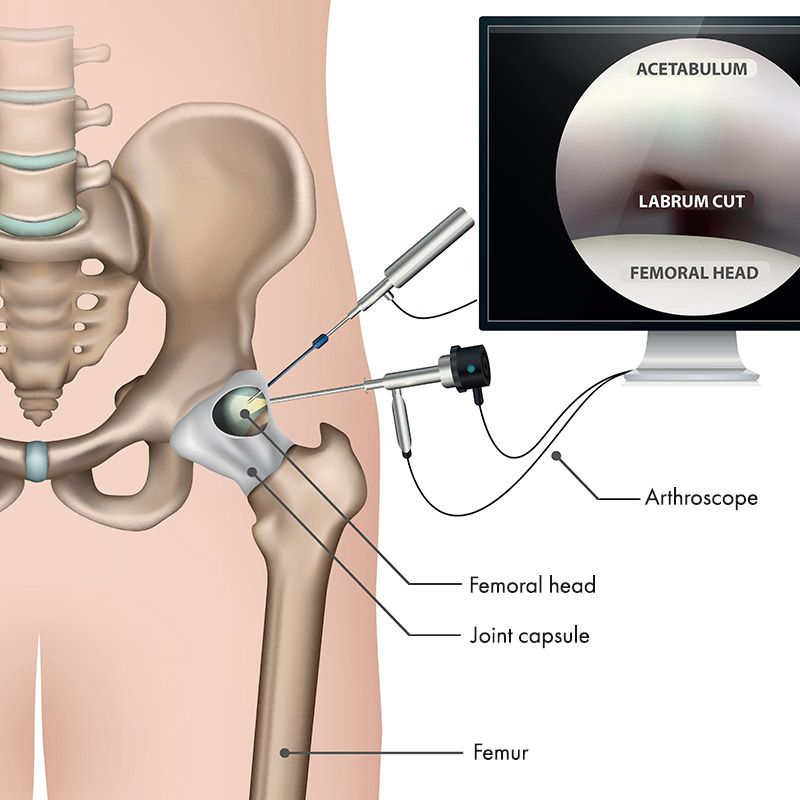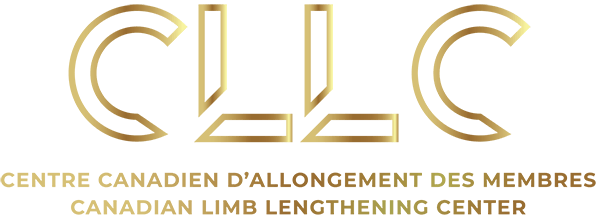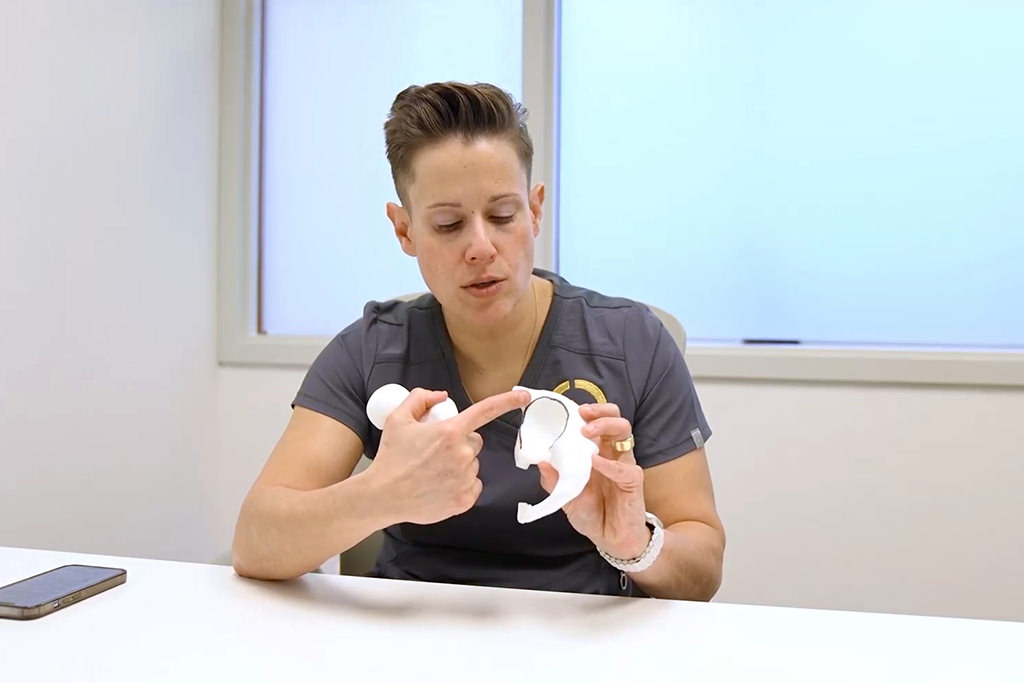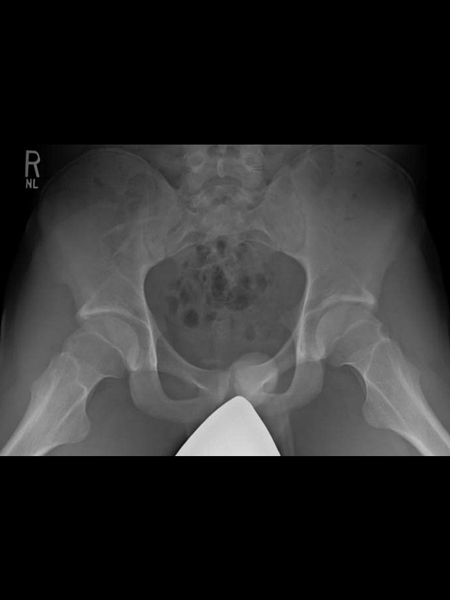Femoral-acetabular impingement (FAI) is a dynamic condition of the hip that can be a source of pain and disability and can potentially lead to arthritis. This condition is diagnosed when the shape of the femoral neck and acetabulum are abutting one another causing pain or damage. A Hip arthroscopy is a minimally invasive hip surgery that uses a small camera called an arthroscope. During surgery a special device helps separates the ball and socket of the hip joint allowing your surgeon to introduce the arthroscope into your joint. With this technique we can visualize the hip joint, find the source of impingement, and proceed appropriately. FAI may present alongside labral tears that can be treated or reconstructed during your hip arthroscopy surgery.
Indications / Candidacy
Hip arthroscopy can be used to correct Femoral acetabular impingement (FAI). This can occur as a result of underlying anatomic abnormalities, an accident, or even trauma during sport. Patients experiencing FAI may have pain with prolonged sitting, walking and/or deep flexion of the hip. This pain may resonate in the anterior, lateral and posterior area of the hip, which is called the C-sign. The ideal patient for arthroscopic treatment of FAI is a young non-arthritic patient who is symptomatic and has clinical and radiologic evidence of impingement. Hip arthroscopy can also be used to treat patients with labral tears and perform labral reconstruction (replacing the labrum with a cadaveric tendon graft) if needed.
Good Candidates for Hip arthroscopy may need treatment for the following:
- CAM impingement: when there is a bump lesion on the femoral neck that impinges on the acetabulum (the socket)
- Pincer impingement: when the acetabulum (the socket) is protruding out and impinging on the femoral neck
- Labral lesions or tears
- Removal of loose and foreign bodies
- Removal of osteochondral fracture fragments
- Treatment of synovial diseases


Treated Conditions
The Canadian Limb Lengthening Center offers a team of experienced surgeons, nurses and physiotherapists that make patients feel supported throughout their entire treatment process. Our ability to treat complex orthopedic conditions with a holistic approach gives our patients the best possible outcomes. Femoral-Acetabular impingement (FAI) can be treated using hip arthroscopy. To learn more about this condition, follow the link below:
Surgical Technique
- Patient is put in a lateral position on the operating table on an anti-slip mattress.
- Patient’s leg is placed in a boot (that resembles a ski boot) on a hydraulic leg support.
- We do NOT use any posts between the legs. Rather the hip is distracted using the patient’s own body weight against the weight of their leg, by tilting the table slightly head down (Trendelenburg).
- Distraction is visualized on the intra-operative radiographs and the leg is then sterilized. Portal placement (usually 2-3 small 1cm incisions are made and insertion of the arthroscope and the instruments follows.
- Capsular release is done between the hip scope portals
- Identification of the different anatomic structures and the labral tear if present.
- If presence of labral tear, identification of the extent of the tear is ascertained and then the labral is separated from the acetabular edge and acetabular edge is burred to bleeding bone. This allows the labral to heal back to acetabular.
- If the patient has a pincer component to the impingement, then the bony protrusion is removed with a burr until normal acetabular coverage. If the patient’s labrum is not repairable, a decision about preforming a labral reconstruction (using a cadaveric tendon to remake the labrum) is made.
- Set up anchors and repair labrum or placed new labrum reconstruction. Once labrum is repaired or reconstructed, the traction is released.
- Assess CAM impingement on femoral side, if present, remove with burr.
- Verify complete excision of CAM with fluoroscopy and with a variety of hip movements using the hydraulic leg support (i.e., flexion, adduction and internal rotation).
- Capsular closure then performed when required
- Close the wound, apply standard dressing and intra-articular injection of anesthetic for pain management.

Results
The goal of surgical treatment for FAI is to recreate the spherical contour of the femoral head and improve, repair/reconstruct any damage to the head, and repair/reconstruct the labrum to restore normal mechanics and joint sealing. A Hip arthroscopy for FAI has been shown to provide excellent outcomes, with pain relief and return to sports or activities comparable with, and even better than, open surgical hip treatment. The small surgical device that is used during arthroscopy causes very little trauma to the joint, minimizing hip pain and scarring. After surgery and proper physiotherapy, patients find they have improved comfort, range of motion and function of their hip joint.


Potential Complications
As with any surgical procedure, Hip Arthroscopy can have difficulties and complications. In most cases, our team of specialist can address these concerns without compromising the end results or outcome. Complications and side effects may include:
- Extravasation of fluid into the thigh or retroperineal space
- Numbness in groin, thigh, leg or foot that can persist for several days to several weeks (Neuropraxia), but this is much more rare now that we don’t use a post between the legs.
- Scope trauma to articular cartilage
- Hip dislocation post op (rare)(in patients at risk a brace will be prescribed)
- Superficial infections, deep vein thrombosis, neuro-vascular injuries which are potential risks in any surgical procedure but are rare
- Continued pain in hip or future pain in hip due to underlying process of arthritis
- Recurrence or regrowth of the CAM or pincer lesion causing femoral acetabular impingement
AM I A CANDIDATE?
Are you experiencing an orthopedic condition and would like to improve your physical capabilities?
Or you simply would like to achieve your long-lasting dream of improving your height?
Let us help you achieve your optimal health and wellness in a professional setting.
Let’s open up a discussion to help you achieve your goals.




Highly specialized expert care at CLLC
At the Canadian Limb Lengthening Centre we offer complex deformity correction and limb lengthening surgeries performed by experienced surgeons with the most up to date technologies. When it comes to your care, and treatment of deformity and limb length discrepancy, our surgeons have extensive training and experience.







